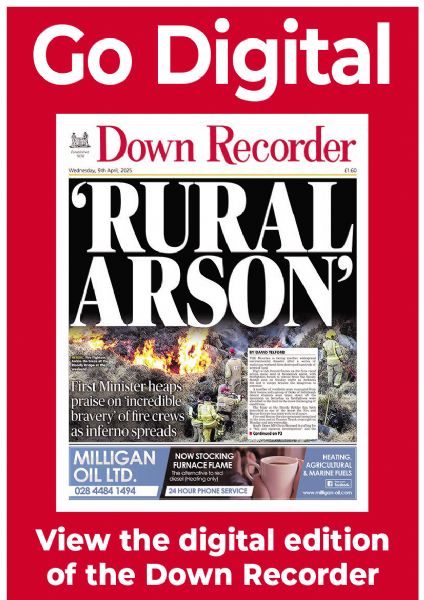Auschwitz: A journey into hell
Auschwitz: A journey into hell
5 April 2017
FOR most it was the concrete chill of the gas chamber, for others it was thousands of worn shoes and piles of human hair - the tipping point for each student visiting Auschwitz-Birkenau concentration and death camp was different.
Reading that more than one million people were killed at the death camp during the Second World War cannot prepare for the reality of its horrors.
That is why The Holocaust Educational Trust brought 200 A-level students to explore the most notorious killing field on earth last week as part of its Lessons from Auschwitz Project, which is based on the premise that “hearing is not like seeing”.
It was a soft start for our group, including students from Assumption Grammar School, Down High School, St Patrick’s Grammar School and Shimna Integrated College, who were first brought to explore the once vibrant town of Oswieçim (later translated to Auschwitz in German) to consider what life was like there before the eradication of its 10,000-strong Jewish population and its worldwide association with genocide.
It was warm and sunny as we walked along the banks of the River Sola to Oswiecim’s market square. Then we travelled to the nearby death camp to meet our guide.
“Death by shooting, torture, death by gas chamber and hanging,” she began.
“The method of destruction of human beings was starvation first of all. Corpses on the ground, hanging over the barbed wire fence, some were shot on their way to work as a warning to others not to try to escape.”
The brisk introduction was sobering, worsened by the shock of being led past horrific evidence of mass murder, through exhibitions of discarded spectacles, prosthetic limbs, shoes and bags, finishing in the gas chamber, where one student reached up to touch the scratch marks torn out of the walls by the dying.
My own tipping point was seeing the shorn hair of 40,000 prisoners, hair considered more valuable than life to the SS who sold it for half a mark a kilo to be woven into socks and blankets.
I fixated on one blonde ponytail, disturbed by how similar it looked to my own daughters’ hair.
The teenagers were silent when asked for their reflections upon leaving this exhibition. In fact it was a teacher who spoke emotionally about what he had just witnessed.
“Did you see how styled some of the hair was, some of it was plaited. I have a wife and daughter at home,” he said, shaking his head.
“You will hold them closer tonight,” the guide responded.
Moving to Birkenau death camp, the subdued students were shocked by the scale of the 400-acre camp, the train track to nowhere, sheds and chimneys stretching kilometres into the distance.
While many stories of Auschwitz were familiar, it was here I heard for the first time that inmates charged with clearing human remains from the gas chamber floor, salvaged teeth that they secretly sowed in the soil in the hope that one day their story would be told.
Our first stop in Birkenau was the communal latrines where we were told unprintable stories of demeaning sanitation practices, enforced nakedness and vicious head shearing.
Rabbi Barry Marcus said the toilet block typified the loss of human dignity that was the death camp.
“The only purpose of Birkenau was to extinguish life,” he said.
“When you were stripped of your clothing and modesty that presented a great problem, mainly to women. Married women especially valued certain modesty, having that stripped away caused problems on so many levels.
“But they stood up and refused to succumb to a process of total dehumanisation.”
Speaking at a candle-lit memorial service a short time later, Rabbi Marcus advised the students would find it “difficult, if not impossible to comprehend what took place right here where you are standing”.
“If we decided right now to hold a minutes silence for every victim of Auschwitz it would take two years,” he said.
“However different we might be as individuals, while the words of our prayers may be different, I believe our thoughts are much the same. An assault on difference is an assault on humanity.”
For 17 year-old Daniel Napier, of St Patrick’s Grammar School, Rabbi Marcus’ address left the most powerful impression of the day.
Struggling to absorb the magnitude of Holocaust suffering, Daniel said he was moved by the directness of the Rabbi’s words.
“I know the context of the Holocaust and I saw the harsh conditions, the sheer size of the camp was shocking, but I just could not experience the emotions,” he said.
“I felt numb although I realised I should be upset. I noticed that parents in our group reacted almost immediately to what they were seeing, but for me, perhaps because of my age, it will take some time to process.”
Daniel was invited to stand alongside Rabbi Marcus to read a poem by 14 year-old Avraham Koplowicz who was murdered in Auschwitz-Birkenau in September 1944.
He said he felt uplifted by the hope in the words he read to the 200 students, signalling an end to their gruelling field trip.


